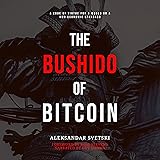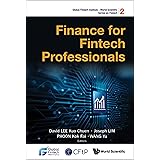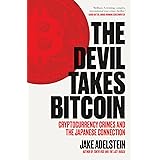The cryptocurrency market stands at a pivotal juncture, exhibiting robust bullish sentiment despite a recent Federal Open Market Committee (FOMC) meeting that, upon deeper analysis, reveals complexities. As discussed in the accompanying video, the immediate green across altcoins and Bitcoin, coupled with gains in traditional indices like the NASDAQ and S&P 500, suggests a market anticipating a significant upward trend in the coming months.
This comprehensive analysis delves beyond surface-level reactions, exploring the macroeconomic undercurrents, pivotal regulatory shifts, and emerging altcoin narratives poised to drive the next major rally. Understanding these intricate dynamics is crucial for investors navigating the volatile yet opportunity-rich digital asset landscape.
Decoding the Latest FOMC Meeting
The recent FOMC meeting initially seemed to inject bullishness into the market, yet a closer examination reveals a more nuanced picture. The Federal Reserve’s decision to implement a 25 basis point rate cut, while seemingly dovish, occurred amidst a PCE (Personal Consumption Expenditures) inflation rate of 2.9%. Historically, the Fed has been reluctant to cut rates with inflation figures above 2.5%, making this the first instance in over 30 years.
Contradictory Signals and the Stagflation Threat
This unconventional rate cut raises significant questions about the Fed’s priorities. Chairman Powell acknowledged that inflation remains “somewhat elevated,” economic growth has “moderated,” and “job creation is below the breakeven rate.” These statements paint a challenging economic picture, with risks to inflation “tilted to the upside” and risks to employment “tilted to the downside.” This specific combination of rising inflation and subdued economic growth, which Powell described as a “challenging situation,” is the very definition of stagflation.
Stagflation represents the Fed’s worst nightmare, as traditional monetary policy tools become ineffective. Cutting interest rates to stimulate the economy would exacerbate inflation, while raising rates to combat inflation would further depress employment and economic growth. This dilemma renders the central bank largely powerless, making its admission of potential stagflation a profound concern for the broader financial landscape.
The Dot Plot Controversy and Miran’s Influence
Further unsettling aspects of the FOMC meeting emerged from the “dot plot,” which represents Fed members’ individual projections for future interest rates. A notable divergence was observed, particularly from Stephen Miran, who projected significantly deeper rate cuts of approximately 1.25%. This aggressive dovish stance gains immense importance given Miran’s recent confirmation as a Federal Reserve governor and his strong ties to former President Trump.
Seasoned market observers like Nick Timiraos and Jim Bianco have openly criticized the meeting for its “contradictions” and chaotic nature. Bianco specifically suggested that Powell’s stated “risk management” cut was a concession to political pressure from Trump. Consequently, the market is beginning to discount Powell’s remaining influence, which ends in May next year, and is instead looking forward to the likely succession of Stephen Miran. Miran’s perceived willingness to align with Trump’s desires for lower interest rates and the initiation of Quantitative Easing (QE) is a key driver behind the current bullish sentiment across both traditional and crypto markets.
Macro Tailwinds: TGA Replenishment and Forward-Looking Markets
Beyond the direct implications of Fed policy, another significant macroeconomic factor contributing to the current market buoyancy is the status of the Treasury General Account (TGA). Following a period where the Fed actively drained liquidity from the economy to refill the TGA, it has now approached its target balance.
The TGA, which was being refilled to an $850 billion target, now stands at approximately $823 billion. This means the Fed has largely ceased its efforts to remove liquidity from the market, having withdrawn an estimated $550 billion in just the last month and a half. This cessation of liquidity tightening is unequivocally bullish for asset prices, as it alleviates a substantial drag on market capital.
Combined with the forward-looking market sentiment anticipating a more dovish Fed under Stephen Miran, these macroeconomic shifts create a powerful impetus for asset appreciation. Investors are essentially “pricing in” a future environment of lower interest rates and renewed quantitative easing, catalyzing a broad rally that includes Bitcoin, altcoins, and even tech-heavy indices like the NASDAQ and S&P 500.
Game Changer: SEC’s Generic Listing Rules for Crypto ETFs
A silent yet monumental development occurred during the FOMC meeting distraction: the SEC issued a rule change poised to dramatically accelerate the approval of crypto Exchange Traded Funds (ETFs). This new framework significantly streamlines the process, potentially opening the floodgates for a wider array of digital asset-backed investment products.
Expanding Access Beyond Bitcoin
Under the revised rules, an Exchange Traded Product (ETP) can qualify for generic listing if the underlying commodity trades on an Intermarket Surveillance Group member market or underlies a futures contract traded for at least six months on a CFTC-regulated designated contract market. Critically, if an ETF provides at least 40% economic exposure to a commodity and trades on a national securities exchange, other ETPs for the same commodity can also be listed under these generic standards. This rule change leverages the precedent set by Grayscale’s legal victory, which challenged the SEC’s selective approval of futures-based Bitcoin ETFs over spot Bitcoin ETFs.
Consequently, the path is now clearer for ETFs tracking not just Bitcoin and Ethereum, but a broad spectrum of altcoins, including Solana, Litecoin, Dogecoin, Bitcoin Cash, Polkadot, Shiba Inu, Avalanche, Chainlink, Stellar, Hedera, and Cardano. While some, like XRP, may have delayed eligibility (e.g., October 2025), the overall message is that the SEC is dismantling previous bureaucratic hurdles. The list of exchanges with futures on Coinbase that are eligible for spot ETF-ization is extensive, further validating this expansive potential. While demand for niche altcoin ETFs might not materialize instantly, the increased accessibility marks a significant maturation of the crypto investment landscape.
Staking ETFs and the Evolution of DeFi
An intriguing implication of these new ETF rules, as highlighted by industry experts like Mert Mumtaz, relates to staking. Many of the forthcoming ETFs are expected to incorporate staking mechanisms, allowing investors to earn yields on their holdings directly through the ETF wrapper. This development presents a direct challenge to existing Digital Asset Treasury (DAT) companies, which traditionally offered staking and asset accumulation services.
To remain competitive, DATs will be compelled to move further down the risk curve, shifting their focus from simply holding and staking tokens to actively engaging with and supporting decentralized finance (DeFi) protocols. This strategic pivot means that capital raised by these entities will be increasingly deployed to grow the broader crypto ecosystem, rather than just accumulating passive holdings. This institutional inflow into DeFi could unlock unprecedented liquidity and innovation, fundamentally altering the competitive landscape for decentralized applications.
Altcoin Season: Indicators Aligning for Potential Explosive Growth
Beyond regulatory and macroeconomic factors, historical market patterns and technical indicators are also signaling a potentially explosive altcoin season in the near future. These confluence of signals provide a strong argument for sustained bullish momentum.
Historical Precedents and Seasonal Trends
Bitcoin’s performance often sets the tone for the broader crypto market. Historically, a “green September” frequently precedes a very bullish fourth quarter, particularly October, November, and December. Instances from 2024, 2023, 2016, and 2015 demonstrate this pattern, where positive September closes ushered in significant end-of-year rallies. October, in particular, has proven to be Bitcoin’s strongest month, exhibiting substantial green candles and outperforming other months in terms of average returns.
The current setup, with Bitcoin showing strength post-FOMC and the market discounting Powell in favor of a dovish future Fed, positions Bitcoin for a strong seasonal rally. This bullish Bitcoin performance typically acts as a catalyst, pulling the entire altcoin market upwards.
The Alt Season Indicator and RSI Crossover
A key indicator for a true altcoin season is the “Alt Season Indicator,” which, when it remains above 75 for a week, historically signals a sustained rally. This threshold was crossed on September 11th and has now held for a full week, as of September 18th. Previous instances where this indicator remained above 75 for over a week have led to impressive returns on TOTAL3 (total market capitalization excluding Bitcoin and Ethereum), with gains of 80%, 98%, and 70% observed in different market cycles.
Furthermore, technical analysis on the Relative Strength Index (RSI) crossover between TOTAL3 and Ethereum (ETH) reveals another compelling signal. An RSI crossover, indicating that altcoins are set to outperform ETH, has just occurred. Previous crossovers in 2021 and 2023 were followed by substantial altcoin outperformance, yielding approximately 200% and 190% returns, respectively. This strong technical confluence suggests that altcoins are poised for significant gains, potentially outperforming even Ethereum in the coming months, signaling a true alt season.
Spotlight on High-Potential Altcoins and Ecosystems
Amidst these broader market trends, specific altcoin projects and ecosystems are exhibiting remarkable strength and attracting significant attention. Identifying these “alpha” opportunities is key for strategic investors.
ASTER: The “Chinese Hyperliquid” Narrative
ASTER, a new derivatives DEX operating on the Binance Smart Chain (BSC), has been a standout performer, experiencing explosive growth from an entry point of around 7.7 cents to a recent high of 61 cents, representing a more than 5x return. This impressive rally is fueled by strong speculation of involvement from Binance’s CZ and whispers of an impending full exchange integration or token listing on Binance.com. Often dubbed the “Chinese Hyperliquid,” ASTER benefits from the broader narrative surrounding Central Limit Order Book (CLOB) perpetuals (perps) DEXs, a sector currently attracting immense capital and attention due to their efficiency and liquidity.
HEMI: Bitcoin Layer 2 with Strategic Backing
Another project capturing significant interest is HEMI, a Bitcoin Layer 2 solution designed to bring DeFi and programmable contracts to the Bitcoin ecosystem. With a current market cap around $550 million FDV, HEMI is still considered early-stage but holds immense potential. Crucially, HEMI is known to have strategic investment from CZ and his team, placing it in a similar category of high-conviction projects as ASTER. Should HEMI follow a similar trajectory, it represents a compelling opportunity to gain exposure to the burgeoning Bitcoin Layer 2 narrative with strong backing.
DRIFT, MYX, and the Decentralized Perps Sector
The decentralized perpetuals (perps) sector is demonstrating extraordinary valuations, with projects like MYX reaching a fully diluted valuation (FDV) of $16 billion. This benchmark underscores the massive market demand and capital flowing into efficient, decentralized trading platforms. Against this backdrop, DRIFT is emerging as a strong competitor to established platforms like Hyperliquid. With hints from prominent investors like Kyle Samani suggesting DRIFT’s competitive edge, the project is experiencing a significant catch-up trade. Recent entry points around 82-83 cents suggest there is still ample opportunity for growth within this rapidly expanding sector.
BNB’s Enduring Strength and Ecosystem Narratives
BNB, the native token of the Binance ecosystem, continues to defy expectations, recently hitting $1000 for the first time. From its ICO price of 10-15 cents, BNB has delivered an astounding 10,000x return in just over 3,000 days, making it one of the most successful investments in crypto history. Recent speculation regarding CZ’s potential return to a leadership role at Binance, spurred by his public profile changes and ongoing discussions with the DOJ to drop oversight requirements, has further fueled a bullish BNB narrative. This renewed enthusiasm for the BNB ecosystem translates into positive momentum for associated projects and derivatives DEXs built on BSC.
Other Noteworthy Projects
Beyond these highlights, several other projects warrant attention. ØG Labs, an L1 blockchain for AI, has already achieved a $2 billion market cap on futures markets, positioning itself as a leader in the AI-crypto convergence narrative. Aventus, a previous “Front Runners” call, has delivered significant returns, demonstrating the power of early identification. Lastly, Curve’s recent listing on Robinhood expands its reach to a broader retail investor base, potentially boosting its liquidity and adoption.
The convergence of a politically influenced dovish Fed outlook, strategic SEC rule changes facilitating broader ETF adoption, and powerful technical indicators signaling an imminent altcoin season creates a uniquely bullish backdrop for the crypto market. Astute investors are now positioning themselves to capitalize on these significant shifts, recognizing that this period may indeed represent a critical window before a parabolic ascent in digital asset valuations. The ongoing expansion of decentralized finance, coupled with new, strategically backed projects, underscores the dynamic and lucrative opportunities available for those with a deep understanding of the market’s evolving landscape.







